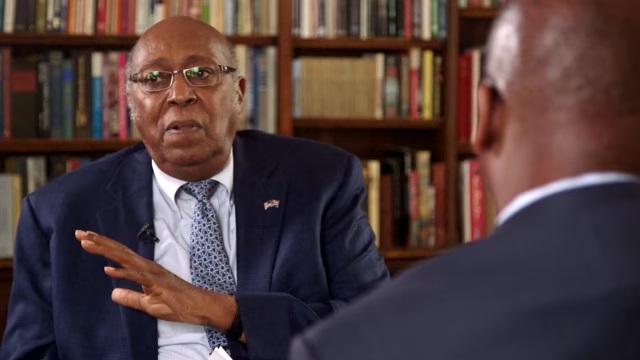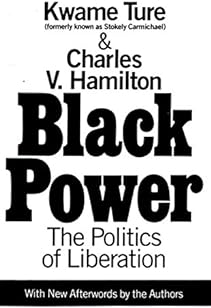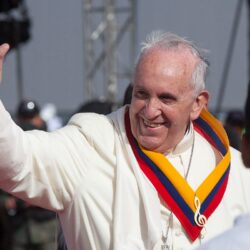 Career
Career Charles V. Hamilton, 1929-2023: The Philosopher Behind ‘Black Power’
Political scientist Charles V. Hamilton, the tokenizer of the term ‘institutional racism,’ an apostle of the Black Power movement, and at times deemed both too radical and too deferential in how to fight for racial equity, died on November 18, 2023. He was 94.
Wilmot James, a friend and colleague of Hamilton, described Hamilton as a modest and private man, — James even he learned of his passing from Hamilton’s bank representative, The New York Times reported. Jeh C. Johnson, former secretary of homeland security and friend of Hamilton, remembers him in a similar way. “He was not a screamer, he was not a rebel. He was a quiet, dignified, soft-spoken, very progressive intellect behind the Black Power movement,” Johnson said in an interview.
Yet for such a composed individual, Hamilton is best known for Black Power: The Politics of Liberation – a manifesto written alongside Stokely Carmichael that shook up the multiracial anti-discrimination crusade in the 1960s. Their manifesto concluded that racism was an integral part of the nation’s systems, thereby creating ‘institutional racism.’ A conclusion of this nature convulsed both moderate and conciliatory groups like the N.A.A.C.P. and white people who opposed discrimination and any preferences in government policies that alienated Black individuals in areas like housing, public accommodations, jobs, and education.
In the manifesto, Hamilton and Carmichael created a vision for the Black Power movement that was radical but nonviolent. It required Black individuals to recognize and value their own self-worth and then unite around a common goal. Still, Hamilton believed that his greatest contribution to American history was not the formulation of this vision, but the belief that a group must first close ranks before it can enter society. For Hamilton, his comments about ‘closing ranks’ were not about integration or a call for separatism and polarization. Instead, he believed that for Black communities to belong in mainstream America, they had “to understand that we are Black people and not ashamed of that.”
In their manifesto, Hamilton and Carmichael redefined the Black Power movement and how Black people fit into American life. To them, Black Power should “work to establish legitimate new institutions that make participants, not recipients, out of a people traditionally excluded from the fundamentally racist processes of this country,” while also challenging the idea that Black people are unable to lead.
In a radio interview with Studs Terkel in 1967, Hamilton spoke candidly about the need for his manifesto and the conclusions that it founded. “We went to school. It was called a school of slavery and a school of segregation. And the lessons were very clear,” Hamilton said. “You hate yourself. You are supposed to hate yourself because you are a quote “minority,” you are different. You are lazy, apathetic, and so forth. And you pass out of this school and pass those lessons to the extent that you believe this, you see.”
Hamilton continued, “The point we are trying to make in this book is that one’s individual stance in relationship to the Black man is irrelevant. It’s what the system does, and that’s why we use the term ‘institutional racism’.”
According to Hamilton, viable coalitions and collaborations between Black and white communities would only be sustainable when white Americans could understand and agree that the lessons instilled into Black people was a goal set goal, and these goals benefitted the common good as whole.
Following his radio interview, Hamilton continued his efforts of reframing the Black Power movement as a developmental process, not an end as itself. In an article that he wrote in The New York Times Magazine in 1968, he highlighted that an equitable distribution of power has to originate from a place of mutual self-interest, not from guilt or altruism. “It must be clear by now that any society which has been color-conscious all its life to the detriment of a particular group cannot simply become colorblind and expect that group to compete on equal terms,” Hamilton said.

Black Power: The Politics of Liberation became a groundbreaking manifesto after its release and was considered highly incendiary. Random House published Black Power, and even they saw the need for a disclaimer to preface the publication. “This book presents a political framework and ideology which represents the last reasonable opportunity for this society to work out its racial problems short of prolonged destructive guerrilla warfare. That such violent warfare may be unavoidable is not herein denied. But if there is the slightest chance to avoid it, the politics of Black Power as described in this book is seen as the only viable hope,” they said.
Hamilton described the book’s unusual birthing in a 2017 interview with Frederick C. Harris for Annual Review of Political Science:
We finished it in May of ’67, gave it to Random House, they said, “Great,” and began to put it in motion. By then, Carmichael was off and running. In August, they were in production, Random House. Stokely, where was he? With Castro.
He was on the podium with Fidel, “Revolution now, revolution now.” Bennett Cerf, one of the publishers with Random House said, “We’re not going to publish this book.” I was then summer teaching at UCLA. John Simon, my editor, called me and said, “Get out here. They’re going to kill the book.” Okay, I went out overnight. We sat there, 401 Madison (I do this to improve the effect of the story), and they said, “Look, we’re going to kill this book if you don’t say that you’re not for violence. That’s the thing we don’t want to hear.” So I said, “Well, this is our manuscript.” They said, “Call Stokely.”
We called him and I said, “Carmichael, they’re not going to publish the book.” And then he said some good-sounding words and said, “I don’t care.” Then John Simon said, “Well, look. Let’s you and I sit down and craft a statement,” which is on the inside of the book. And people don’t understand why that statement is there.
August, 1967. We write something, I call Stokely back and he says, “Aw yeah man, go ahead, I’ll accept that.” The book was published in October. We’re selling five thousand copies a week for about a year and a half.
Less than 10 years after this publication, Hamilton began working for Richard J. Daley’s Cook County Democratic Party as a strategist. There, he urged the 1976 party platform to promote benefits for all disenfranchised individuals regardless of their color. He was soon criticized by more militant Black people for his pragmatic preference for deracialization.
“[I]n in a speech at a 1976 Democratic National Committee meeting,” Hamilton’s former student and future colleague Wilbur C. Rich would recall for Columbia Magazine, “… Hamilton suggested that it would be acceptable for presidential candidates to soft-pedal the race issue as long as they dealt firmly and unequivocally with issues that affected the black community once they were elected. No matter how sympathetic candidates were to black causes, Hamilton argued, they could do nothing to help African Americans if they alienated their mostly conservative electoral base and never took office. This statement, reflecting Hamilton’s pragmatism about electoral politics, was not well received by some black activists. However, Hamilton saw his role as explaining the difference between electoral and protest politics.”
Charles Vernon Hamilton was born on October 19, 1929, in Muskogee, Oklahoma. His father, Owen, worked as a garage mechanic. In 1935, his mother, Viola (Haynes) took Hamilton, his older brother, and his younger sister to their new home – the South Side of Chicago.
A political scientist on paper, Hamilton aspired to be a journalist, yet he worried about the lack of Black men in the profession. In its place, he began exploring an interest in government and civil service. In the late 1940s, he joined the military once it was integrated. After discharge, Hamilton received a degree in political science from Roosevelt University in Chicago. He did a brief stint in law school before eventually landing at the University of Chicago for a master’s degree in 1957.
Hamilton became a faculty member at the Tuskegee Institute in Alabama in 1958. He was fired two years later from the historically Black college for being “too radical” and teaching students how to march, protest, and contact Congress.
Rich detailed the moment for Columbia Magazine when Tuskegee let Hamilton go. “Hamilton walked into a lecture with the termination letter in his shirt pocket. Students saw this as an act of defiance. Although he later told me that he had not been as confident as he acted, his unapologetic expression of his ideas, both inside and outside the classroom, left a lasting impression on me and his other students.”
He soon returned to the University of Chicago and received his doctorate in 1964. Hamilton then taught at Rutgers University in New Jersey, Lincoln University in Pennsylvania, and Roosevelt University before finally landing at Columbia University as the Wallace S. Sayre professor of government and political science, becoming one of the first Black scholars to chair a department at an Ivy League school. Between each of his teaching positions, Hamilton would often work for the U.S. Post Office.
In 1991, Hamilton published Adam Clayton Powell, Jr.: The Political Biography of an American Dilemma, a well-received look at the New York congressman. Hamilton’s other works include The Dual Agenda: Race and Social Welfare Policies of Civil Rights Organizations, which he wrote with his wife Dona Cooper Hamilton, a professor at Lehman College in New York.
In 1998, he retired from Columbia and planned a move to South Africa, which he first visited, as a political scientist, in 1979 – during the apartheid era. He ultimately didn’t move there but did visit in the post-apartheid era.
After leaving Columbia Hamilton stayed in the New York era but eventually returned to Chicago after the death of his wife in 2015. He was preceded in death by her and his daughter Carol, who was the press secretary to Commerce Secretary Ronald H. Brown. She, alongside Brown, was killed in a plane crash in Croatia in 1996. He is survived by Valli Hamilton, his stepdaughter.































































































